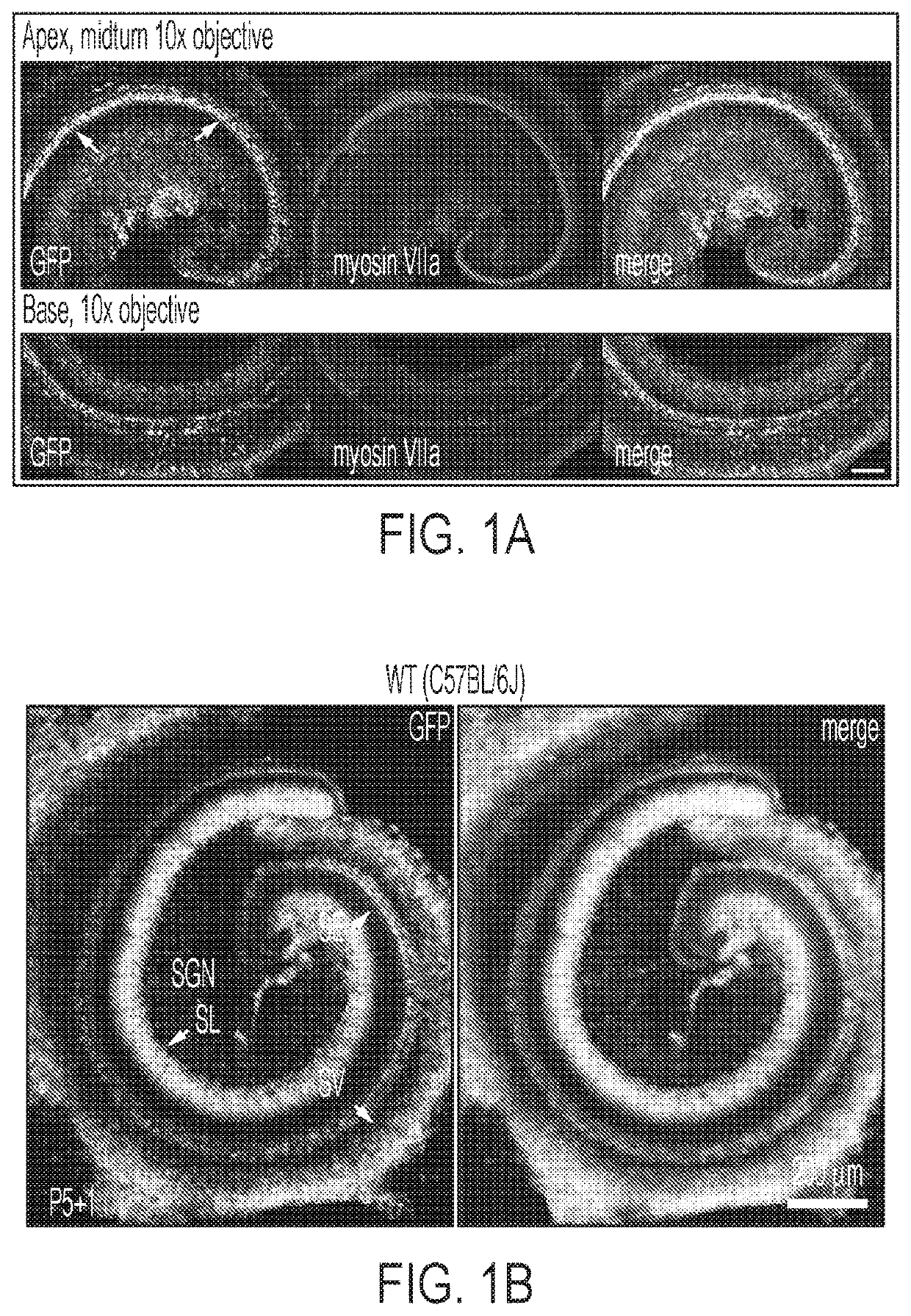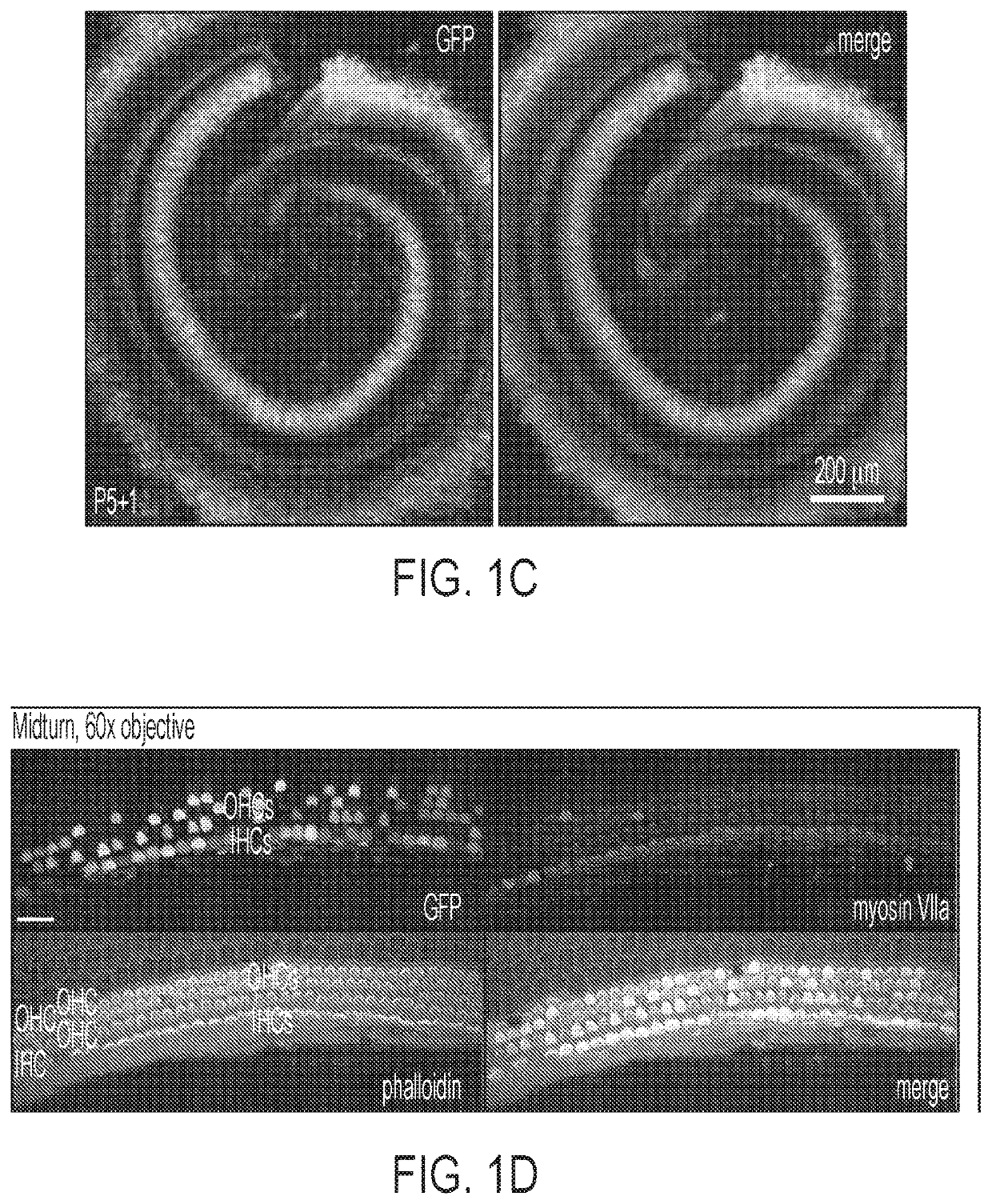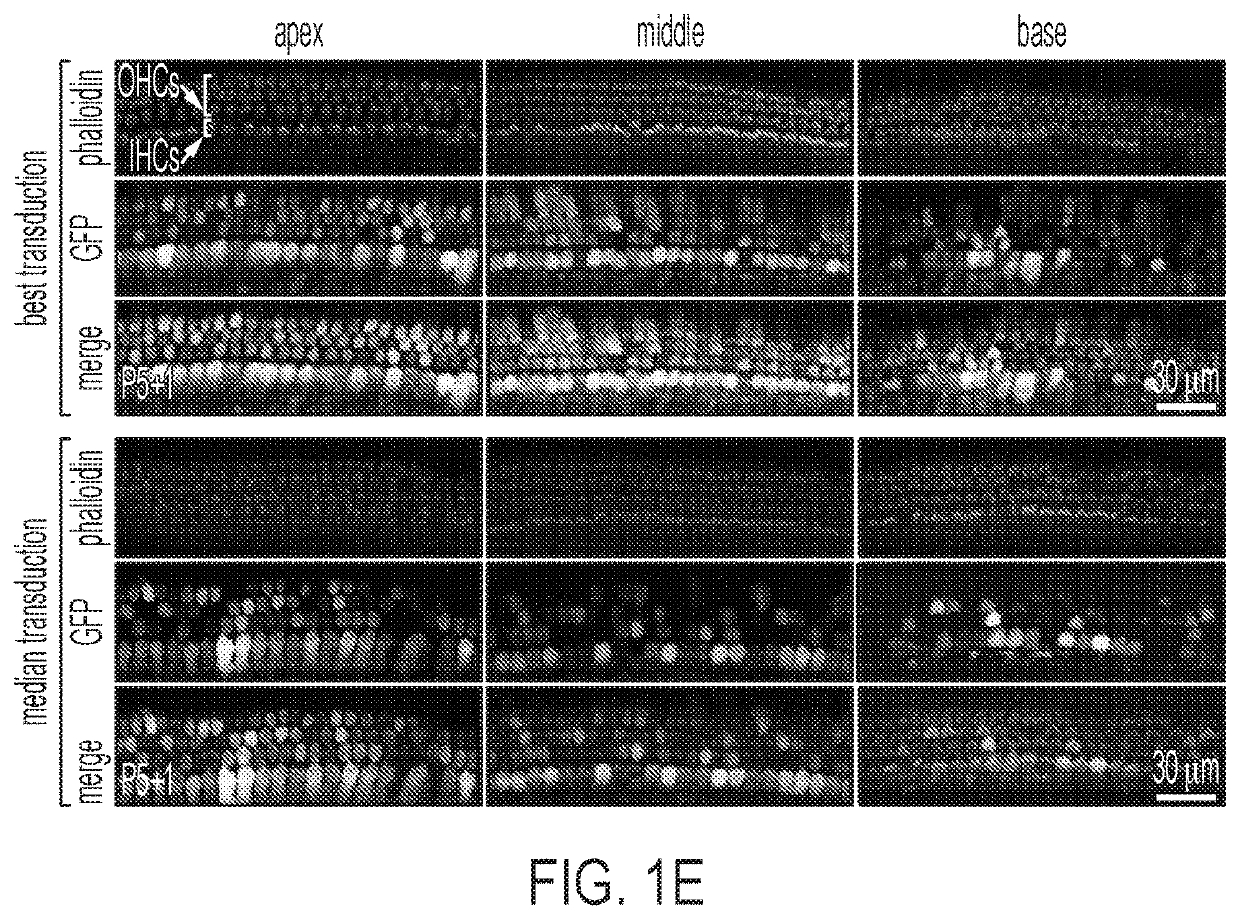Aav vectors encoding clarin-1 or gjb2 and uses thereof
a technology of clarin-1 or gjb2, applied in the field of aav vectors encoding clarin1 or gjb2, can solve the problems of not being able to identify enhancers that selectively drive expression in subsets, not having good vectors that transduce all cochlear cells, and significant challenges for clinical translation of aav-based gene therapy
- Summary
- Abstract
- Description
- Claims
- Application Information
AI Technical Summary
Benefits of technology
Problems solved by technology
Method used
Image
Examples
example 1
B Efficiently Transduces Hair Cells in Neonatal Mice
[0130]First, the transduction efficiency of AAV9-PHP.B capsid using a single-stranded (ss) AAV transgene expression cassette, with a GFP reporter driven by the chicken beta actin (CBA) promoter was tested. The scalae tympani of the cochleas of neonatal C57BL / 6 mice were injected via the RWM at postnatal day 1 (P1) with 5×1010 vector genomes (VGs) of AAV9-PHP.B-CBA-GFP. Five days later, mice were sacrificed, and cochlear explants were cultured for one additional day before fixation and GFP expression analysis. AAV9-PHP.B mediated efficient transgene expression in inner and outer hair cells of sensory epithelium in neonatal P1 mice after round window membrane (RWM) injection (FIG. 1A). Robust transduction in the spiral ganglion region, sensory epithelium, and lateral wall of the cochlea was observed (FIG. 1B and FIG. 1C). Higher magnification images of the sensory epithelium revealed efficient GFP expression in both IHCs and OHCs (FI...
example 2
ression and Function in the Murine Inner Ear
[0133]To test AAV9-PHP.B in an animal model of hereditary deafness, a deafness gene for which postnatal treatment is feasible in human was selected. In Usher 3A (caused by mutations in CLRN1), the hearing loss is not profound at birth but is progressive, providing a reasonable window for AAV-mediated gene therapy. Normal Clrn1 expression in the developing inner ear was investigated first. The Shared Harvard Inner-Ear Laboratory Database (SHIELD) revealed highly enriched expression of Clrn1 in cochlear and vestibular HCs relative to non-HCs. Alternative splice forms of Clrn1 have been identified, organs of Corti and spiral ganglion regions from embryonic day (E)17 up to P7 in CD1 mice were dissected for RT-PCR analysis with primers in exon 1 and exon 4 of Clrn1. RT-PCR analysis revealed that isoform 2 of Clrn1 (containing exons 1, 3, and 4) was the predominant mRNA species expressed at all ages; however, isoform 3 (containing exons 1 and 4)...
example 3
B-Mediated Clrn1 Expression in Hair Cells Results in Restoration of Hearing in a Mouse Model of Usher 3A
[0135]For AAV-mediated Clrn1 expression in HCs, Clrn1 isoform 2 was packaged under the control of the CBA promoter into AAV9-PHP.B (ss genome) with an N-terminal hemagglutinin (HA) tag to allow antibody detection (FIG. 3A). Expression of Clrn1 mRNA by RT-PCR and of clarin-1 protein was observed by immunostaining, after transfection of the plasmid into 293T cells. Next, 7.4×1010 VGs of AAV9-PHP.B-CBA-HA-Clrn1 was injected into Clrn1− / − animals at P1. Robust immunostaining with an anti-HA antibody of Clrn1 in the hair bundles of IHCs and OHCs was observed. There was staining also in the kinocilium and cuticular plate region (FIG. 3B and FIG. 3C). Cell bodies showed diffuse immunostaining (FIG. 3C). Importantly, transduction efficiency of vector encoding HA-CLRN1 was similar to that seen with vector encoding GFP, with more efficient transduction in the apex compared to that in the ba...
PUM
 Login to View More
Login to View More Abstract
Description
Claims
Application Information
 Login to View More
Login to View More - R&D
- Intellectual Property
- Life Sciences
- Materials
- Tech Scout
- Unparalleled Data Quality
- Higher Quality Content
- 60% Fewer Hallucinations
Browse by: Latest US Patents, China's latest patents, Technical Efficacy Thesaurus, Application Domain, Technology Topic, Popular Technical Reports.
© 2025 PatSnap. All rights reserved.Legal|Privacy policy|Modern Slavery Act Transparency Statement|Sitemap|About US| Contact US: help@patsnap.com



